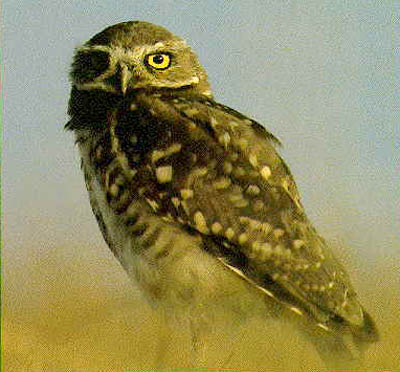In hopes of beefing up protection for a once-widespread bird,
the Santa Clara Valley Audubon Society and other environmental
organizations will petition the state to list the western burrowing
owl as an endangered or threatened species under the California
Endangered Species Act.
SAN JOSE – In hopes of beefing up protection for a once-widespread bird, the Santa Clara Valley Audubon Society and other environmental organizations will petition the state to list the western burrowing owl as an endangered or threatened species under the California Endangered Species Act.
Once widely distributed in California and the Santa Clara Valley, the western burrowing owl is currently listed as a “species of special concern” by the state and federal governments because of declining population. Habitat loss to urban development, intensive agricultural practices and destruction of ground squirrel networks are blamed primarily for the decline.
“Audubon chapters and other conservationists throughout the state have been fighting a losing battle against development projects for decades in an attempt to protect these owls,” said Craig Breon, Santa Clara Audubon’s executive director. “We need the formal protection listing the species will provide to turn that trend around.”
The owl favors open, dry and sparsely vegetated land with available burrows from creatures such as ground squirrels and forages on rodents and insects. It is a favorite of bird lovers because it comes out in the day and is not frazzled by noise or human activity, often allowing observers to approach to within 20 yards.
While it was once common in the Santa Clara Valley, roughly 100 breeding pairs remain today in the South Bay, Audubon officials said.
If the petition to the state’s Fish and Game Commission is successful, developers could be asked to replace or preserve more original habitat for the bird instead of replacing it with land elsewhere, such as the Central Valley.
The Audubon Society sued the City of Morgan Hill over protection of the owl last month, alleging it has not properly complied with mitigation requirements for campus industrial development and redevelopment projects and has procrastinated on a long-term plan.
Five nesting pairs of the owls were counted in Morgan Hill in 1997 but none were found last year. The most recent count showed just one, although Breon said more could still be in the area.
The groups petitioning for the owl also include the Center for Biological Diversity, Defenders of Wildlife, San Bernardino Valley Audubon Society, California State Park Rangers Association, and Tri-County Conservation League.










